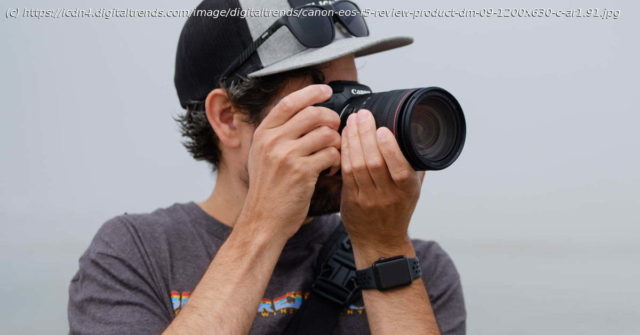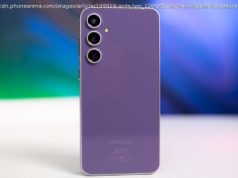Step up beyond your phone and reach for one of these dedicated cameras, from large-sensor interchangeable-lens models to advanced compacts that fit in a pocket.
More than image quality, resolution, and speed, the best camera needs to be enjoyable to use. You should feel encouraged to take it out of your bag and leave your phone in your pocket. And, preferably, such a camera needs to do this without putting too much strain on your bank account. That’s why I think the Fujifilm X-T4 is the best camera you can buy right now. It doesn’t have the biggest sensor, nor the most megapixels, but it’s still the closest thing I’ve seen to the perfect camera thanks to a strong combination of features at a price appropriate for enthusiast photographers. But if money is no object, you may want to check out the Canon EOS R5 or another full-frame camera. The R5 is a very impressive still camera with a powerful, if impractical,8K video mode — but it costs over twice as much as the X-T4. Fortunately, in 2020, there’s no such thing as a bad camera, and you have plenty of options at a variety of prices. Why should you buy this: A high-performance, well-rounded camera that won’t break your back Who’s it for: Enthusiast photographers, or anyone looking for a one-size-fits-all camera Why we picked the Fujifilm X-T4: This camera doesn’t have the biggest sensor or most megapixels (if that’s what you’re after, the medium-format Fujifilm GFX 100 may be more your style), but when it comes to the actual photographic experience, no other camera delivers quite like the Fujifilm X-T4. Its classic design with analog-inspired control dials is married to modern features like 5-axis sensor-shift stabilization,4K video, and a fully articulating monitor. It covers the gamut from street photography to video production and everything in between, and it does all of these things to a very high degree of competence. I’ve always enjoyed shooting Fujifilm X-series cameras, but couldn’t ignore their few quirks. The X-T4 is the first model to address virtually very complaint I’ve ever lodged, even solving one problem (the lack of stabilization in older models) that was previously thought to be impossible due to size constraints. Battery life has nearly doubled, the articulating screen is great for video, and autofocus performance is encroaching on Sony territory (that is to say, it’s really good). The newly designed shutter is whisper-quiet and can fire away at 15 frames per second, which, honestly, is more speed than any Fujifilm photographer was even asking for. The X-T4 does carry over much of the same tech as the Fujifilm X-T3, including the 26-megapixel X-Trans sensor, X Processor 4 image processor, and 3.69-million dot electronic viewfinder. The video mode is largely the same, as well, offering 4K at up to 60 fps, but Full HD recording can now hit 240 fps compared to the X-T3’s 120 fps. That means the X-T3, which is now heavily discounted, may be the better choice for you if you don’t need stabilization, super-speed continuous shooting, or extreme slow-motion video. But for me personally, after shooting the X-T4 and experiencing how all its features work in concert, I don’t want to shoot anything less. Read our Fujifilm X-T4 hands-on review or see more best mirrorless cameras Why should you buy this: Balanced performance, features, image quality, and price Who’s it for: Anyone who still needs an optical viewfinder and marathon battery life. Why we picked the Nikon D780: The D780 is Nikon’s most refined DSLR. It replaces the incredibly popular D750 — from way back in 2014 — and uses an updated 24-megapixel sensor. It is Nikon’s first DSLR to incorporate on-chip phase-detection autofocus, a feature inherited from its mirrorless Z series that gives the D780 responsive performance in live view and video modes. The eye-detection autofocus, in particular, is very impressive. In fact, the D780 is essentially the DSLR version of the mirrorless Nikon Z 6. That does beg the question: Why buy the D780 when you could just get the Z 6, which is currently quite a bit cheaper? Honestly, I think most people are better off doing exactly that. Mirrorless cameras offer advantages in packaging, user friendliness, and, at least in this case, price. The Z 6 is a capable camera and I love the strategy Nikon is taking with its Z-series lenses. The D780, then, is more of a specialist. Many photographers still love using an optical viewfinder, and the D780’s, if nothing new, is still nice, offering 100% frame coverage and a bright pentaprism. Additionally, the larger body of a DSLR can be more comfortable when paired with certain lenses, especially longer zooms that grow too front-heavy on mirrorless cameras. Battery life is another advantage. Optical viewfinders draw very little power. Combined with efficiency improvements, the D780 can work all day long with a CIPA rating of 2,260 shots per charge. I have to imagine only a small group of people actually need that kind of long-lasting power, but it’s a welcome feature for those who do and means you can save money by not having to buy spare batteries. The higher-resolution D850 was my previous choice for best DSLR, and that’s still the better camera for some photographers, namely working pros. I think the D780 offers the best balance of features for the price, however, and its 4K video and faster live-view autofocus make it the right choice for the majority of customers. I wish Nikon had put an AF joystick on it, but oh well — you can’t win them all. Read our Nikon D780 review or see more best DSLR cameras Why you should buy this: High resolution, excellent autofocus, fast performance, advanced 8K and 4K video. Who’s it for: Professional photographers and serious enthusiasts. Why we choose the Canon EOS R5: The Canon EOS R5 shocked me. After the good-but-not-great EOS R and the positively underwhelming EOS RP, I had grown accustomed to Canon phoning in its mirrorless cameras. But the R5 — and its sister camera, the EOS R6 — sets a new course for the 2-year-old, full-frame EOS R series, and it’s a bold one. The EOS R5 is the most technologically advanced camera I’ve tested, and even though it fails to live up to all of the hype, it still succeeds where it matters most.






